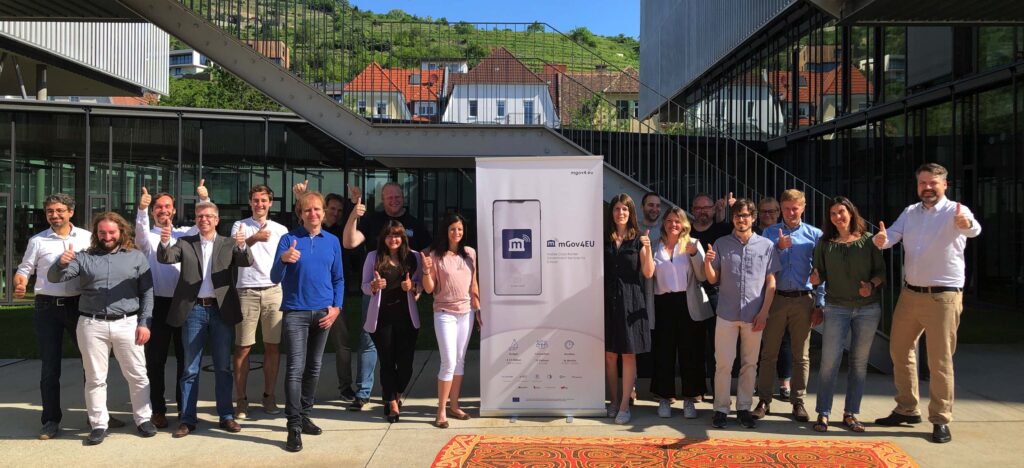| Objectives | Work towards objective and status in period 1 (month 1 to 12 |
| Enhancing the technical eIDAS interoperability solution and SDG infrastructure to make them compatible with mobile-only use cases | The technical architecture of eIDAS interoperability has already been enriched, and the work continues towards a more detailed designed technical architecture.
The SDG infrastructure has already been enriched, and the work continues towards a more detailed designed technical architecture. |
| Implementing enhanced eIDAS and SDG related architectures, concepts and building blocks | Initial implementation activities have already been carried out. First results are available in the form of initial proofs of concept. These proofs of concept have assessed the feasibility of technical architectures obtained from precious work and hence pave of ready-to-use software packages. |
Combining enhanced eIDAS and SDG related solutions to enable secure and user-friendly mobile use cases | By aligning regularly with other work packages ensures that developed software packages support the realization of secure and user-friendly use cases in a best possible way. |
Integrating implemented solutions into pilots and testing them in real-world scenarios | During the first year of the project, the pilots and their use cases have been defined, and the definition of an initial architecture has started using C4 diagrams. |
| Evaluating relevant perspectives of designed, implemented, and operated architectures, concepts, building blocks, and pilots | The implications and resulting requirements – both for the infrastructure and for the planned demonstrators – have been identified. In addition, the initial version of the transdisciplinary evaluation framework has been created, providing the foundation for the two-round evaluation of the pilots considering the design and implementation phase. |
| Implementing the once-only, digital-by-default, and mobile-first principles in a user-centric manner | mGov4EU pushes forward the practical use of inclusive mobile Government services in Europe, bringing such services in line with EU citizens’ expectations for safe, resilient, and sustainable mobile communication, implementing the once-only and digital-by-default principle across Europe. |
| Implementing the appropriate legal framework | An overview of the legal landscape and regulations was completed, analyzing the relevant legislation, and distilling applicable legal requirements resulting from the GDPR, SDGR, eIDAS Regulation, and other frameworks. |
| Evaluation and involvement of relevant stakeholders | Initial considerations regarding the stakeholders of the project were undertaken. |
| Ensuring the sustainability of project results and achievements | The basis of the communication activities and thus the “tools” of the communication strategy were identified and implemented: website, social media channels, project brochure, newsletter and so on. |


